For those of you who are familiar with our books (Where Did They Put the Guillotine? A Walking Tour of Revolutionary Paris and Where Did They Burn the Last Grand Master of the Knights Templar? A Walking Tour of Medieval Paris), you know they are built around visits to buildings, places, and sites significant to the book’s theme.
Those buildings and sites are only bricks and mortar or dirt and grass unless you know the stories behind them. Once the stories are told, the buildings and sites jump to life and not coincidentally, they are usually centered around some very interesting people.
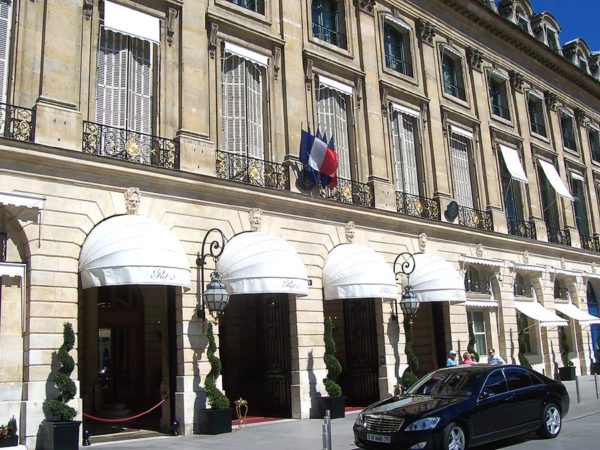
The subject of today’s blog is one of those buildings. Although much younger than the buildings in our prior books, the Hotel Ritz Paris has hundreds of stories with a cast of legendary characters, not the least of which are the hotel’s occupants—both Germans and civilians—during the Nazi occupation of Paris between 1940 and 1944.
Listen to “Puttin’ On The Ritz” while you read.
Marie-Louise and César Ritz
Squeezed into the Paris newspaper headlines but subordinate to the daily updates on the Dreyfus Affair, the much anticipated “glittering reception” on 1 June 1898 formally announced the opening of César Ritz’s new hotel located at 15 Place Vendôme on the fashionable Right Bank in Paris. Invited guests to the Belle Époque event at the Hotel Ritz Paris included the writer Marcel Proust (1871−1922) who spent much of the evening watching the wealthy and internationally known guests, many of whom he would later feature (albeit under different names) in his books.
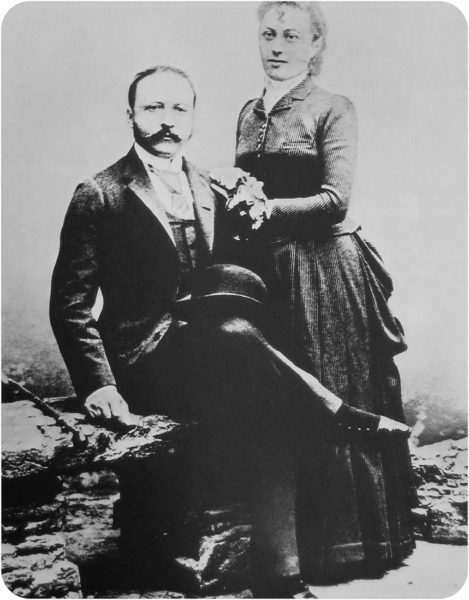
César Ritz (1850−1918) was already well known by 1898 for his premier hotels in Rome, Frankfurt, Monte Carlo, and other European locations. Every need of his guests was fulfilled. Despite owning and operating multiple hotels, The Hotel Ritz Paris would ultimately become his legacy. Unfortunately, Mr. Ritz passed away in 1918 leaving control of the hotel to his wife, Marie-Louise Ritz (1867−1961). After Mr. Ritz’s death, his wife (with assistance of the hotel’s managing director) would run the hotel with her son, Charles (Charley), who reluctantly joined the management team in the 1930s. Charley would manage the hotel after her death but never shared his father’s passion or sense of perfection when it came to “the old ways” of creating a perfect client experience.
The Customer Is Always Right
How many times have we heard this phrase? It has been attributed to César Ritz and it’s probably true (both attribution and intention). His code was “See all without looking; hear all without listening; be attentive without being servile; anticipate without being presumptuous. If a diner complains about a dish or the wine, immediately remove it and replace it, no questions asked.” After his appointment to managing director of the hotel in early 1940, Claude Auzello warned the staff that if there was a complaint lodged against anyone, he would automatically take the side of the customer.
Blanche Rubenstein Ross Auzello
Blanche Auzello (1897−1969) was a high-strung, independent woman who married Claude Auzello, then an assistant manager at the hotel. Blanche moved to Paris in 1922 and promptly had her identification papers changed. She dropped the Rubenstein name and chose Ross. Rather than being born and living in New York City, she had that changed to Cleveland Ohio. On paper, Blanche became Catholic rather than Jewish. While she was at it, Blanche made sure she grew younger by two years.
While Mrs. Ritz was not particularly fond of Blanche, it was Blanche who was responsible for dropping some of the hotel’s arcane rules. Women had traditionally been denied access to the hotel’s bars—Blanche changed that. Spittoons were a fixture in the bars—Blanche got rid of them. The one rule she couldn’t get changed was the unwritten daily quota of Jews allowed to stay as guests in the hotel. We’ll meet up with Blanche again shortly.
Between The Wars
The Hotel Ritz Paris was “the hotel” to stay at during the years between the two World Wars. These years were known as the Jazz Age and many of the African-American ex-pats (including Josephine Baker) were teaching the Parisians the newest dances including the Charleston. The hotel hosted anyone who could afford it, dressed appropriately, and didn’t cause a scene. During these years, entertainers, writers, and intellectuals would become daily fixtures at the hotel.
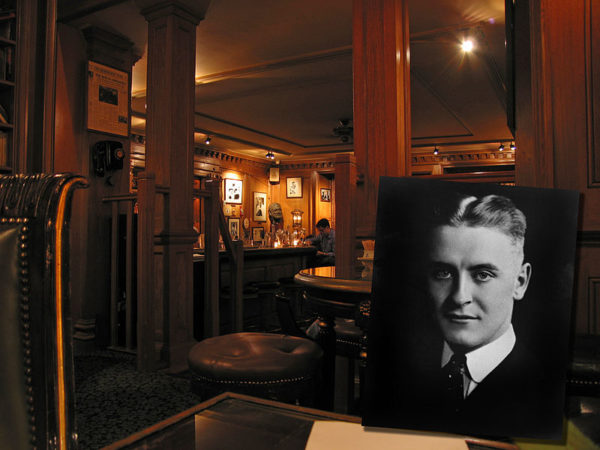
Hotel Reconfiguration
César Ritz’s original purchase was a rather small building on the Place Vendôme. It had less than 90 rooms. His wife ultimately expanded the hotel and created two sides: the Vendôme side and the rue Cambon side. The hotel frontage is on the Place Vendôme while the rear faces rue Cambon. The two sides are connected by a long passage. It was through the discrete Cambon entrance that Princess Diana and her boyfriend left the hotel one evening after having dinner in the Imperial Suite. It was their last meal. Across the street on rue Cambon is the storefront for Chanel. It is the original location of Coco Chanel’s store and upstairs, her former apartment.
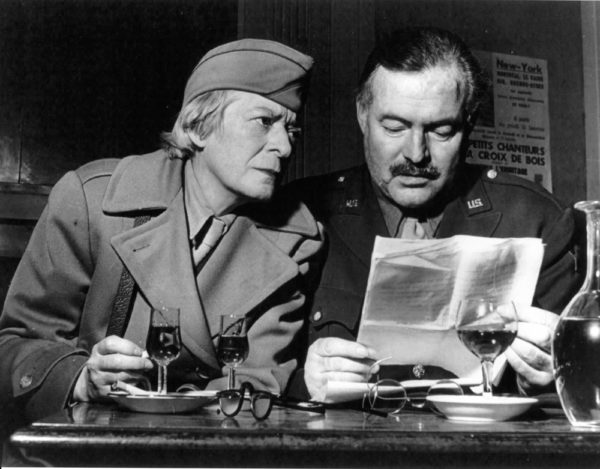
There are four bars located in the hotel: the Ritz Bar, Bar Vendôme, Bar Hemingway, and the Pool Bar. The Bar Hemingway is accessed immediately after you enter from the Cambon side. It is named for its most famous patron who “liberated” the bar and hotel on 25 August 1944 (after Claude Auzello made him deposit his weapons in a closet).
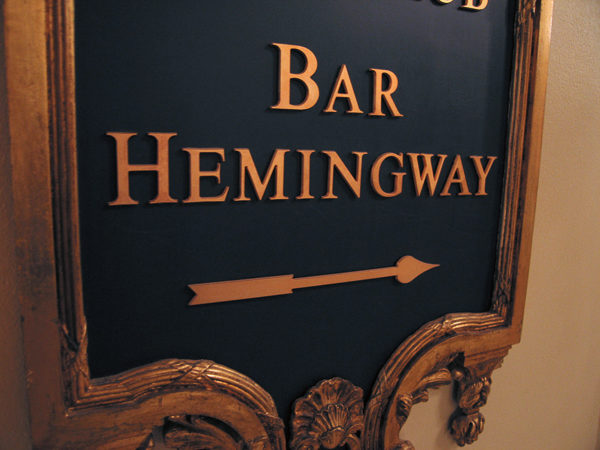
The Ritz Bar (renamed The Bar Hemingway) was the most popular spot (next to the dining room) in the hotel. See the hotel bar. In the years leading up to and during the Occupation, all sorts of people gathered in the bar. It was a favorite meeting spot for German spies and members of the Abwehr (German Intelligence). The head of the Abwehr, Admiral Wilhelm Canaris, would use the hotel as a base. Canaris was one of the leaders of the German resistance and a ring-leader of Operation Valkyrie (the plot to assassinate Hitler on 20 July 1944). It is said that the plot was first discussed and formulated in The Ritz Bar. Other members of this group included Colonel Hans Speidel (he was in charge of overseeing the Hotel Ritz Paris as the accommodations for the Luftwaffe officers), Carl-Heinrich von Stülpnagel (military commander of Paris), and Caesar von Hofacker (Luftwaffe officer who confessed under torture that Erwin Rommel was in on the plot). All but Speidel would be executed for their role in the assassination attempt.
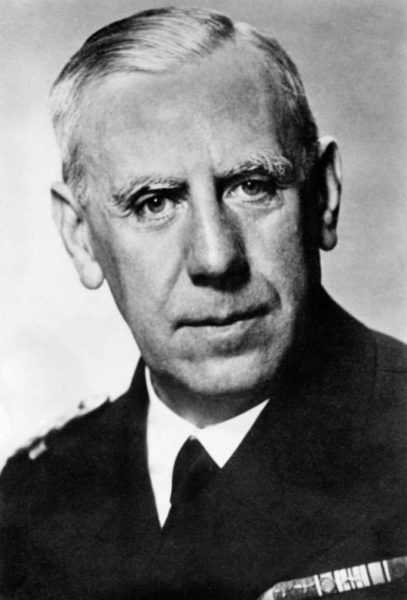
World War II
By the end of the evening on 14 June 1940, the German Luftwaffe command had requisitioned the hotel. For the next four years, they would occupy the rooms on the Vendôme side leaving the Cambon side for permanent residents (e.g., Coco Chanel and Arletty) and hotel guests. Reichsmarshall Herman Göring, head of the Luftwaffe and Hitler’s second-in-command, would always stay in the Imperial Suite when in Paris. Watch Göring arrive.
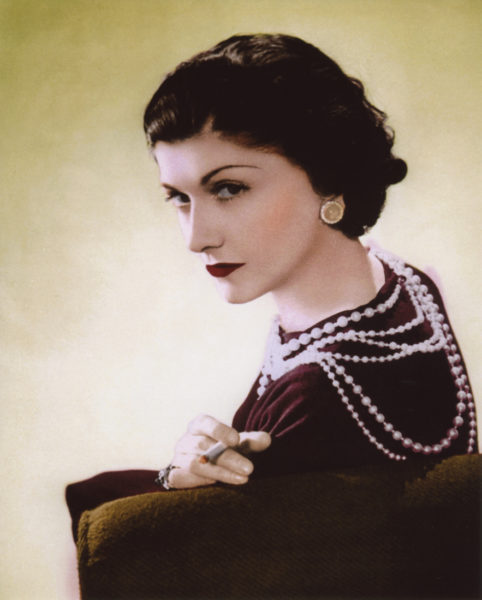
During the time of American neutrality, war correspondents stayed at the hotel and used it as a base to report on the war in Europe. Their favorite spot in the hotel was the bar on the Cambon side. With the liberation of Paris, they all flocked back to the hotel and immediately set up residence until their editors sent them elsewhere. In-between juggling his wife and mistress (and future wife number four), Hemingway managed to have an affair with Simone de Beauvoir; Robert Capa (the photographer) would become Ingrid Bergman’s lover; and Marlene Dietrich would manage to nab herself an American general.
Under the noses of the Germans, the hotel and in particular, the Ritz Bar was used by various staff members to hide their resistance activities. The legendary bartender, Frank Meier, used his bar as a “post box” where clandestine correspondence could be deposited and retrieved—the German intelligence service knew about this but never said anything. Claude Auzello was also working for the French Resistance. In his capacity as managing director, Claude created an undercover network of hotel staff who gathered information overheard from the Germans. Claude would then pass this information on to his French Resistance contacts. Blanche also worked for the resistance but each of them kept the other from knowing about their respective resistance activities. That is until several days after D-Day when Blanche and a friend went to the Maxim restaurant for lunch and became very boisterous bringing attention to themselves. Her companion was a Communist and Blanche was Jewish—both very dangerous attributes.
Blanche and her friend were arrested the day after their “patriotic” display at lunch (this was the second arrest for Blanche). Both were to immediately begin their interrogation by the Gestapo. Blanche was sent to Fresnes Prison, an infamous prison used by the Gestapo and one from which most inmates never returned—either dying in prison or deported to a concentration or labor camp. After a month of severe interrogation and physical abuse (the Germans clearly wanted to know more about her friend than about Blanche), she broke down and began to confess that her papers and passport had been altered. She was Jewish, wasn’t from Cleveland, and her real name was Rubenstein. Immediately after her dramatic (and delirious) outburst, a soldier entered the room and informed her Gestapo interrogator that the last truck was about to pull out (Blanche had been held by the Nazis for more than a month during which time the Allies were racing towards Germany and ultimately, Paris—the Germans were beginning to leave the city). When asked what was to become of Blanche, the Gestapo agent shouted out “Mad! Let the damned French take care of her. We have better things to do.” Blanche was free and began her walk back to the hotel. She would never see her friend again.
The Ritz Paris Today
The decline was slow but everyone saw it coming. Charley Ritz never pursued the perfection or dedication to the hotel that his parents demanded. After Charley died in 1976, the Ritz family sold the hotel to Mohamed Al-Fayed three years later for twenty million dollars. The hotel had lost its “Palace” designation awarded to premium hotels by the French Ministry of Economy, Industry, and Employment. Between August 2012 and June 2016, the hotel was closed for renovations. The Hotel Ritz Paris is once again, a premier destination for the wealthy, celebrities, and entertainers.
Hemingway’s comment rings true again: “When in Paris, the only reason not to stay at the Ritz is if you can’t afford it.”
Epilogue: Claude and Blanche
They were devoted to one another. But Claude had another love interest besides Blanche: The Hotel Ritz Paris. His entire career after serving in the military during World War I was in the hotel industry and in particular, working for the Ritz family. Blanche’s mental state began to deteriorate after her treatment at the hands of the Nazis. After Mrs. Ritz died, her son Charley took over managing the hotel. He did not see eye-to-eye with Claude on the management of the hotel or its traditions. Over time, Claude’s responsibilities were reduced to the point where he said, “Charley is treating me like I am a bellhop.” Claude began to talk of retirement and moving to the south of France. Blanche on the other hand didn’t want to go anywhere. She loved living in Paris. Claude was finally forced out and Blanche got her way.
At three o’clock in the morning on 29 May 1969, Claude pointed a gun at Blanche’s temple and pulled the trigger. Three hours later, the murder-suicide was completed.
Recommended Reading
If you’d like to dig a little deeper into the history of the Hotel Ritz Paris, I recommend the following books:
Mazzeo, Tilar J. The Hotel on Place Vendôme. New York: Harper Perennial, 2014.
Marx, Samuel. Queen of the Ritz. Indianapolis/New York: The Bobbs-Merrill Company, Inc., 1978.
Vaughan, Hal. Sleeping With the Enemy: Coco Chanel’s Secret War. New York: Vintage Books, 2011.
What’s New With Sandy and Stew?
We’d like to welcome Jeanne to our team. Jeanne will be one of our two proof-readers specializing in correcting the mistakes made with respect to the French language, accent marks, and other inconsistencies. Welcome Jeanne!!!
Jeanne’s first assignment will be the second volume of the medieval series (Where Did They Burn the Last Grand Master of the Knights Templar? A Walking Tour of Medieval Paris). We were about to send it off to the printer and digital conversion when Jeanne agreed to assist us.
We’re only three weeks away from our trip to Paris. We’ll be staying on the Left Bank (as usual) in the Latin Quarter. We can’t wait to get there and begin our research for the next book Where Did They Put the Gestapo Headquarters? A Walking Tour of Nazi Occupied Paris (1940-1944).
Sandy and I are putting the final touches on our itinerary for Paris. We are speaking daily with Raphaelle who will accompany us to Drancy, Fort Mont-Valérien, the Leclerc/Moulin museum, and several buildings (including the Gestapo headquarters and German Embassy) that open to the public only once per year during European Heritage Days.
Someone Is Commenting On Our Blogs
If there is a topic you’d like to see a blog written about, please don’t hesitate to contact me. I love hearing from you so keep those comments coming.
Why Would You Want To Buy Our “Walks Through History” Books?
Simple.
You like to travel and experience history and historical events. You like to see original buildings that had a significant impact on the people and events of the history you’re engaged with. You want to know the stories behind the brick and mortar in front of you.
The walking tour books are meticulously researched so you can go directly to those sites and learn about the building’s history as well as an introduction to some of the more interesting people associated with it.
Thank You
Sandy and I appreciate you visiting with us. We have some exciting things on the horizon and we’ll keep you updated as we go along.
Share This:
Follow Stew:
Find Stew’s books on Amazon and iBooks.
Please note that we do not and will not take compensation from individuals or companies mentioned or promoted in the blogs.
Walks Through History
Copyright © 2017 Stew Ross

I found this posting particularly interesting & enjoyed reading it! Looking forward to your next post!